| Kamuflirovannyi Letnyi Maskirovochnyi Kombinezon | |
|---|---|
 | |
| Type | Military camouflage pattern |
| Place of origin | Soviet Union |
| Service history | |
| In service | 1968–present |
| Used by | See Users |
| Wars | |
| Production history | |
| Designed | 1968 |
| Produced | 1968–present |
| Variants | See Variants |
The Kamuflirovannyy Letniy Maskirovochnyy Kombinezon[1] (Russian: Камуфлированный Летний Маскировочный Комбинезон, lit. 'Camouflaged Summer Disguise Coverall')[2] or KLMK is a military uniform with a camouflage pattern developed in 1968 by the Soviet Union to overcome the widespread use of night vision optics and devices by NATO countries.[3] This one-piece camouflage suit became one of the most widely used in the Soviet Union.
As of 2018, the KLMK was being produced.[3]
History
The KLMK was issued to KGB Border Guards in service dress uniforms.[4] It was later seen with their forces sent to Afghanistan during the Soviet–Afghan War.[5]
Design
The KLMK is made with a digitalized spatter-like pattern.[6]
Variants
KZS Suit
The KZS (kostium zashchitnoi seti or protective net suit) Suit is a two-piece camouflage suit, designed for use by chemical troops. Made of coarse loose weave cotton fabric.[2] It was first issued to Soviet chemical troops in 1975[2] and was later widely used by troops from all combat arms, especially during the Afghan war.[6]
The KZS was made to be disposable once it cannot be used any longer.[6]
It is also known as the Berezka or Color 57.[7]
Users
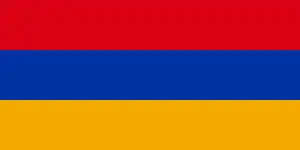 Armenia[8]
Armenia[8]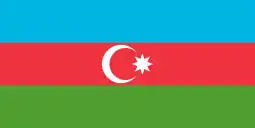 Azerbaijan[9]
Azerbaijan[9]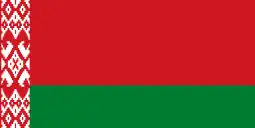 Belarus: KLMK and KZS-type camos used by Belarusian special forces.[10] KZS camos used by Belarusian border guard forces in public appearances.[11]
Belarus: KLMK and KZS-type camos used by Belarusian special forces.[10] KZS camos used by Belarusian border guard forces in public appearances.[11].svg.png.webp) Kyrgyzstan
Kyrgyzstan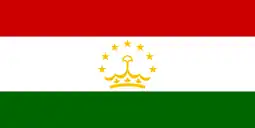 Tajikistan: Berezhka-based patterns used by Tajik Border Guard.[12]
Tajikistan: Berezhka-based patterns used by Tajik Border Guard.[12]
Former
.svg.png.webp) Republic of Afghanistan: Issued to Officers and Commando Paratrooper units.[13][14][15]
Republic of Afghanistan: Issued to Officers and Commando Paratrooper units.[13][14][15]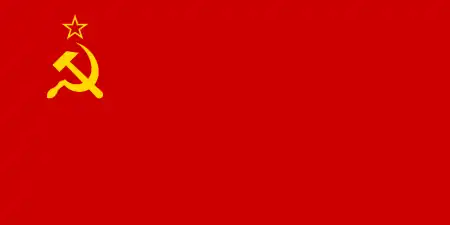 Soviet Union: Known to be used by the KGB Border Guards and the VDV.[1][4]
Soviet Union: Known to be used by the KGB Border Guards and the VDV.[1][4]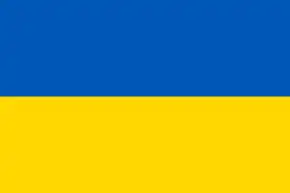 Ukraine: Seen with KLMK pattern-based camos.[16]
Ukraine: Seen with KLMK pattern-based camos.[16]
Partially-recognized states
 South Ossetia: Used by pro-Russian irregulars during the 2008 Russian-Georgian War.[17]
South Ossetia: Used by pro-Russian irregulars during the 2008 Russian-Georgian War.[17]
References
Citations
- 1 2 Zaloga (1985), p. 56.
- 1 2 3 "Trousers, Camouflage, M1975 KZS: Soviet Army". Archived from the original on 8 September 2017. Retrieved 1 April 2020.
- 1 2 "KLMK - the Soviets Did Digital Camouflage First - Soldier Systems Daily". Soldier Systems Daily. 1 March 2018. Archived from the original on 26 September 2019. Retrieved 28 February 2023.
- 1 2 Zaloga (1985), p. 27.
- ↑ Isby (1986), p. 40.
- 1 2 3 Dougherty (2017), p. 70.
- ↑ "Russian Camo: What Camouflage Does Russia Use ?". April 2020. Archived from the original on 25 February 2023. Retrieved 25 February 2023.
- ↑ Larson (2021), p. 194.
- ↑ Larson (2021), p. 198.
- ↑ Larson (2021), p. 335.
- ↑ Larson (2021), p. 358.
- ↑ Larson (2021), p. 328.
- ↑ Afghanistan - Rebels Without A Cause (1989), retrieved 26 June 2023
- ↑ TiltedTowersAfg (8 April 2023). "A Afghan Commando Paratrooper in a KLMK suit, Democratic Republic Of Afghanistan, 1980s [1364x2048]". r/MilitaryPorn. Retrieved 26 June 2023.
- ↑ "General Khushal distributing medals to the members of the Afghan National Guard after the Battle of Jalalabad (1989) [750x749]". r/MilitaryPorn. 24 July 2022. Retrieved 28 June 2023.
- ↑ "Ukrainian M14 Digital Pattern". joint-forces.com. 5 October 2019. Archived from the original on 30 November 2022. Retrieved 28 February 2023.
- ↑ Galeotti (2013), p. 56.
Works cited
- Dougherty, Martin (2017). Camouflage at War: An Illustrated Guide from 1914 to the Present. London, UK: Amber Books. ISBN 978-1782744986.
- Galeotti, Mark (2013). Russian Security and Paramilitary Forces since 1991. Osprey Publishing. ISBN 978-1780961057.
- Isby, David C. (1986). Russia's War in Afghanistan. Osprey Publishing. ISBN 978-0850456912.
- Larson, Eric H. (2021). Camouflage: International Ground Force Patterns, 1946–2017. Barnsley: Pen & Sword. ISBN 9781526739537.
- Zaloga, Steven (1985). Soviet Bloc Elite Forces. Osprey Publishing. ISBN 978-0850456318.
.jpg.webp)